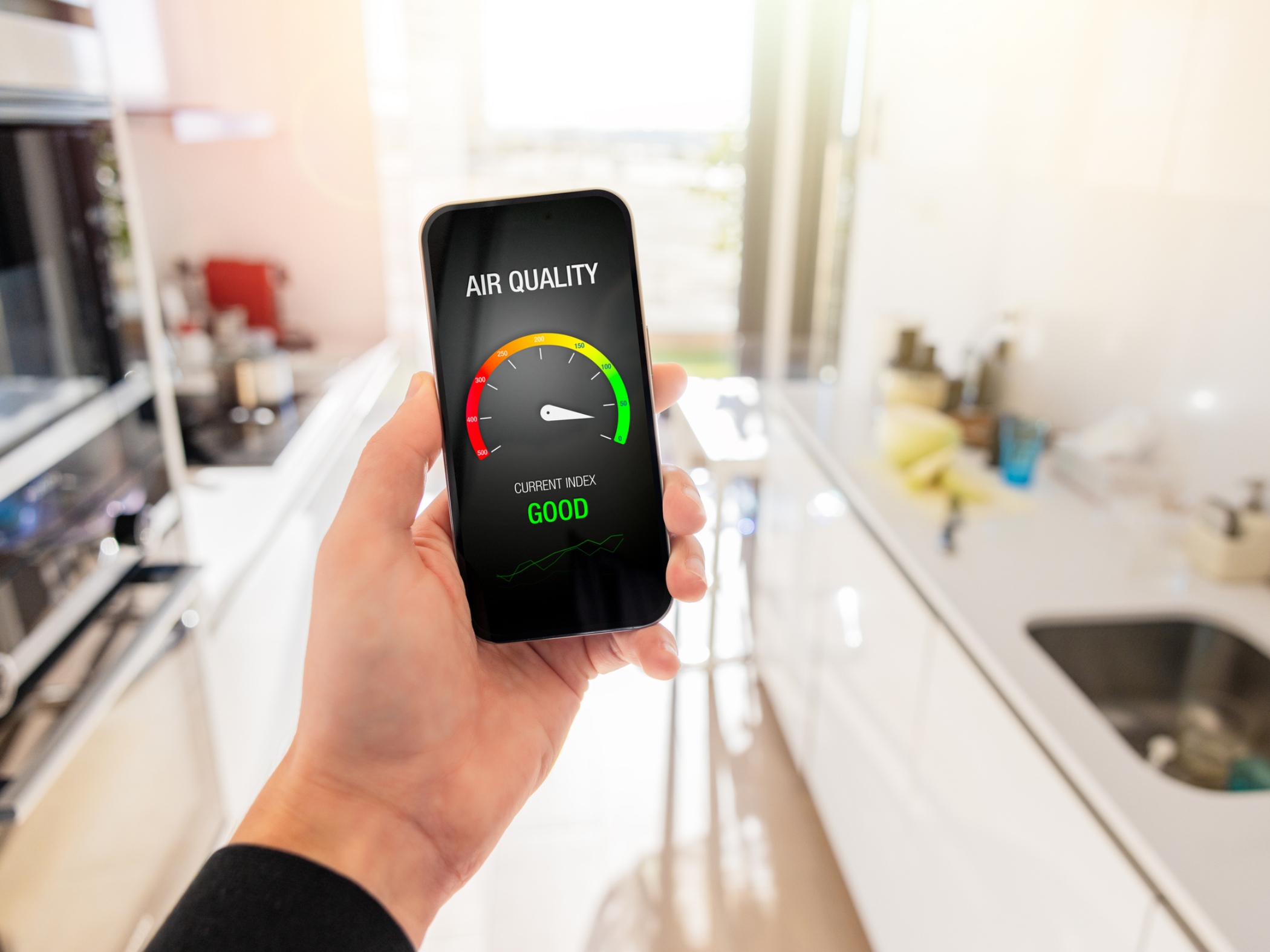Uso de Tecnología Inteligente para Mejorar la Calidad del Aire Interior

A menudo nos centramos en las características visibles de nuestros espacios vitales: la decoración, la distribución y el mobiliario. Pero hay un elemento invisible que es igual de crucial para nuestra comodidad y salud: la calidad del aire interior (IAQ). Los estadounidenses ocupan, en promedio, el 90% de su tiempo en interiores,y el aire que respiramos en casa tiene un impacto significativo en nuestro bienestar. Afortunadamente, la tecnología inteligente está revolucionando la forma en que monitoreamos y mejoramos la calidad del aire interior.
¿Por qué es importante la calidad del aire interior?
Una mala calidad del aire interior puede provocar una serie de problemas de salud, desde dolencias menores como dolores de cabeza y fatiga hasta afecciones más graves, como problemas respiratorios. Los contaminantes comunes del aire interior incluyen el polvo, la caspa de las mascotas, las esporas de moho, los compuestos orgánicos volátiles (COV) de los productos domésticos y los contaminantes del exterior que ingresan.
Soluciones inteligentes para un aire más limpio
Las últimas tecnologías del hogar inteligente ofrecen potentes herramientas para combatir la contaminación del aire interior y crear un entorno de vida más saludable.
- Los monitores de calidad del aire pueden detectar partículas y gases, tales como partículas, COV, dióxido de carbono y radón, y factores ambientales como la humedad y la temperatura. Estos monitores proporcionan datos en tiempo real sobre la calidad del aire de su hogar, a los que a menudo se puede acceder a través de aplicaciones para teléfonos inteligentes. Puede realizar un seguimiento de las tendencias de la calidad del aire y recibir alertas cuando los niveles de contaminantes superen los umbrales aceptables.
- Los purificadores de aire inteligentes cuentan con sistemas de filtración de varias etapas que pueden eliminar partículas tan pequeñas como el polvo, el polen y las bacterias. Puede controlar los purificadores inteligentes de forma remota, programarlos para que funcionen en momentos específicos e integrarlos con asistentes de voz. Los purificadores también pueden funcionar en conjunto con los monitores de calidad del aire, ajustando automáticamente la configuración en función de las lecturas de calidad del aire.
- Los termostatos inteligentes y los sistemas de climatización pueden controlar los niveles de humedad y la circulación del aire, además de controlar la temperatura. Algunos termostatos inteligentes pueden activar las funciones de deshumidificación en sistemas de climatización compatibles. Otros pueden aumentar automáticamente la ventilación cuando detectan actividades de cocina o limpieza. Los sistemas avanzados de climatización también pueden recordarle que debe cambiar los filtros o programar el mantenimiento, lo que garantiza un rendimiento y una calidad del aire óptimos.
Consideraciones para la implementación
¿Listo para respirar tranquilo? La elección de la tecnología inteligente adecuada depende de sus necesidades y presupuesto. Esto es lo que debe tener en cuenta:
- Compatibilidad: Asegúrese de que los dispositivos elegidos puedan comunicarse sin problemas entre sí. Busque sistemas que utilicen una plataforma común para el hogar inteligente para una fácil integración y control.
- Privacidad: Conozca cómo se recopilan y protegen sus datos. Lea atentamente las políticas de privacidad y opte por productos de fabricantes acreditados con sólidas prácticas de seguridad. Algunos dispositivos ofrecen opciones de procesamiento local que minimizan los datos enviados a la nube, lo que puede ser una buena opción para los usuarios preocupados por la privacidad.
- Costo: Si bien hay una inversión inicial, estas tecnologías pueden generar ahorros a largo plazo gracias a una mayor eficiencia energética y posibles beneficios para la salud. Tenga en cuenta tanto el precio de compra inicial como los costos continuos, como los reemplazos de filtros o las tarifas de suscripción para funciones avanzadas.
- Mantenimiento: Incluso los dispositivos inteligentes requieren mantenimiento. Puede ser necesaria una limpieza regular, reemplazos de filtros y calibraciones ocasionales de los sensores para obtener un rendimiento óptimo. Tenga en cuenta las necesidades de mantenimiento al elegir sus dispositivos y prepárese para realizar el cuidado de rutina para que su sistema inteligente funcione sin problemas.
Al implementar estas tecnologías, recuerde que funcionan mejor como parte de un enfoque integral que incluye limpieza regular, ventilación adecuada y minimizar el uso de productos generadores de contaminantes. Con la combinación adecuada de dispositivos inteligentes y buenas prácticas, puede mantener un hogar que promueva su salud y bienestar a través de un aire más limpio y fresco. Puede comprar muchos de estos productos en el Mercado I&M. Muchos productos tienen descuentos instantáneos para ayudarlo a ahorrar aún más.
Volver al boletín informativo